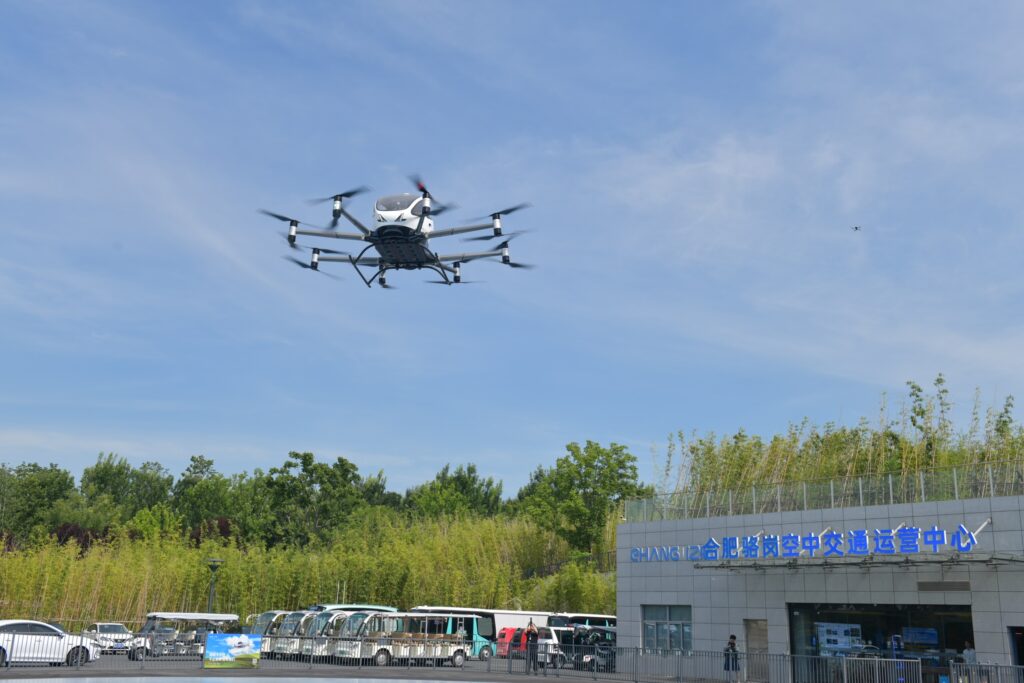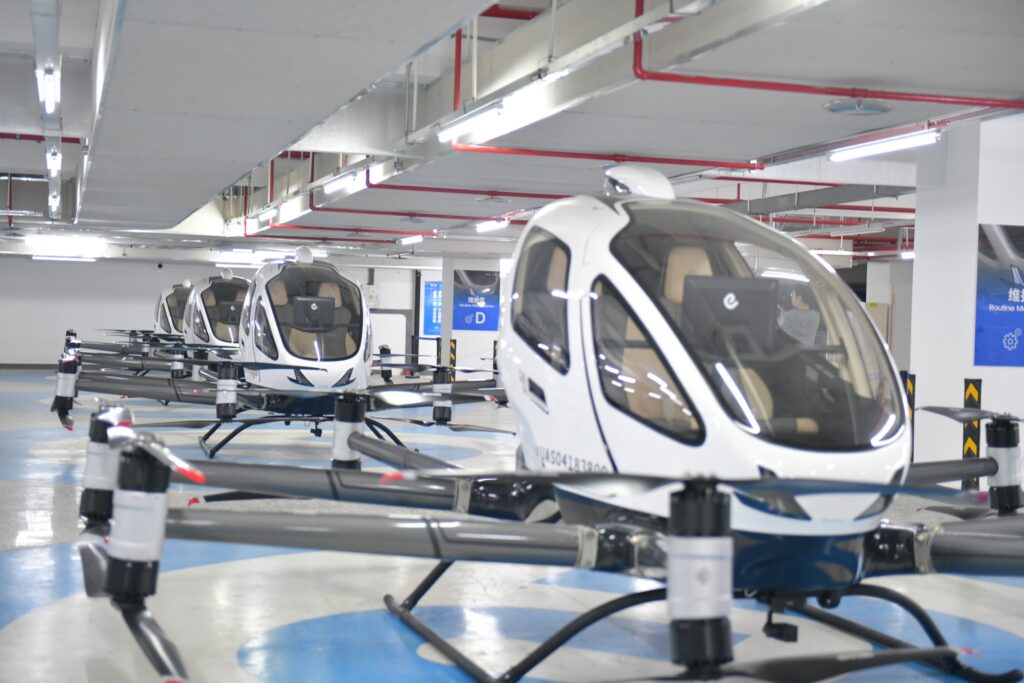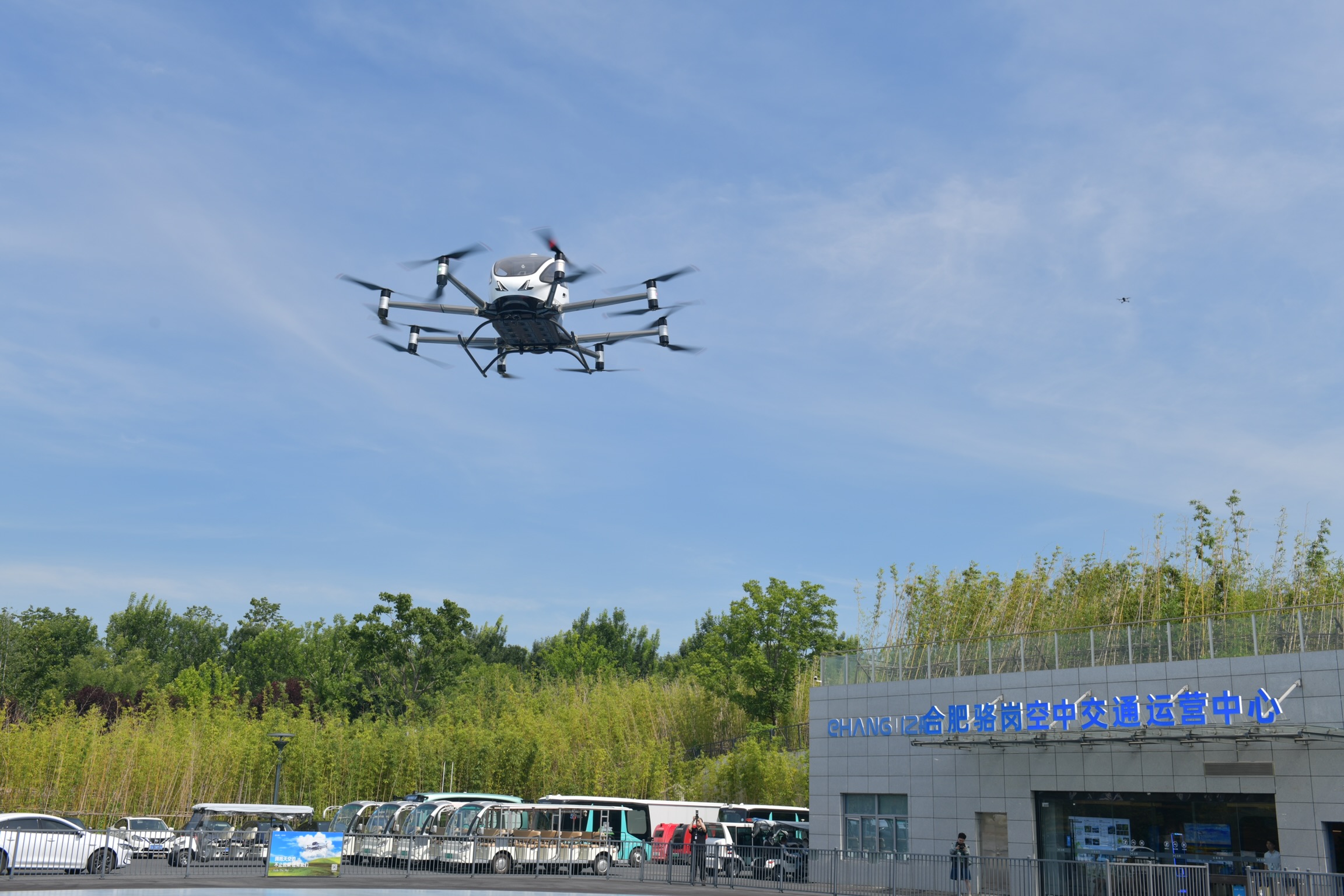From flying taxis to drone-based tourism, Anhui is turning low-altitude airspace into the next frontier of innovation.
A rotorcraft equipped with 16 propellers lifted off, rose to about 25 meters, circled the area, and then landed steadily at its starting point. This “Airbus” is operated by Hefei Heyi Aviation Co., Ltd. It is among the first in China to receive an official operation certificate for passenger-class civil unmanned aerial vehicles.
The aircraft operates from the Luogang Low-Altitude Transportation Center in Hefei, Anhui Province. The center is a multifunctional hub for tourism, science education, and aerial mobility. It can operate 10 electric vertical takeoff and landing (eVTOL) aircraft at once and store up to 50. It also offers maintenance and parts support. In the future, the center will provide customized services for special occasions, such as aerial weddings and business transfers.
In Anhui, the low-altitude economy is rapidly entering everyday life. Drones now deliver meals, snacks, and even emergency medical supplies like blood. Low-altitude sightseeing routes—such as Hefei to Wuhu and Wuhu to Huangshan—are already available, offering tourists a new perspective on travel.
Across China, the low-altitude economy is gaining momentum, led by air taxis and drone logistics. According to the Civil Aviation Administration of China, the market size is expected to reach 1.5 trillion yuan in 2025 and 3.5 trillion yuan by 2035. This sector is set to become a key driver of future urban air mobility and smart logistics.


Additional reporting by CNS.
If you liked this article why not read: China’s First 3v3 AI Robot Soccer Match Kicks Off in Beijing














